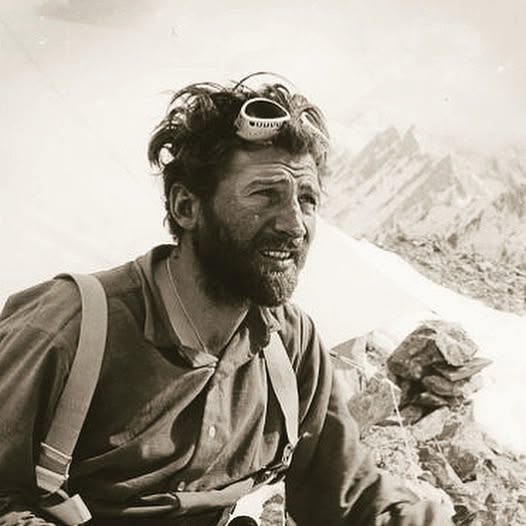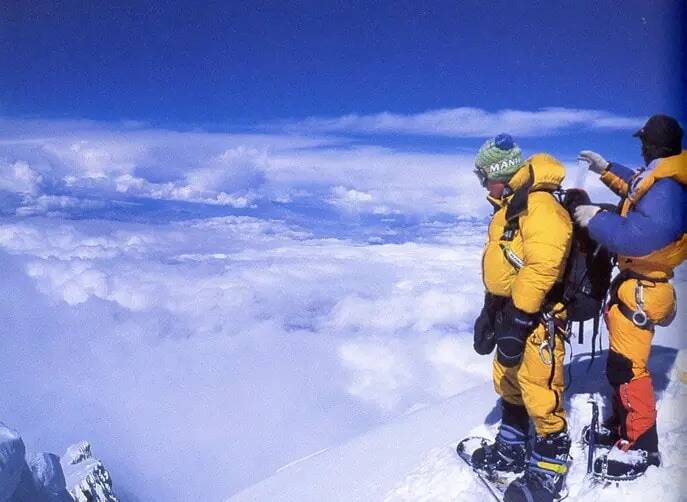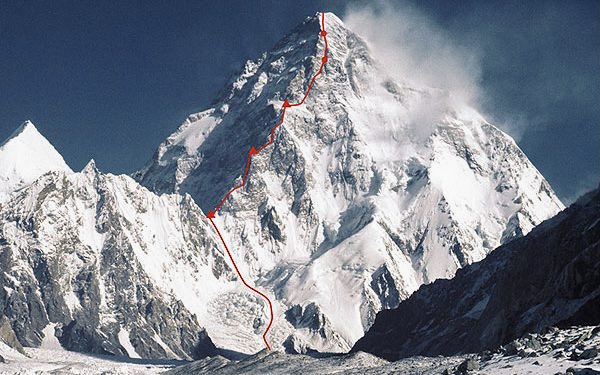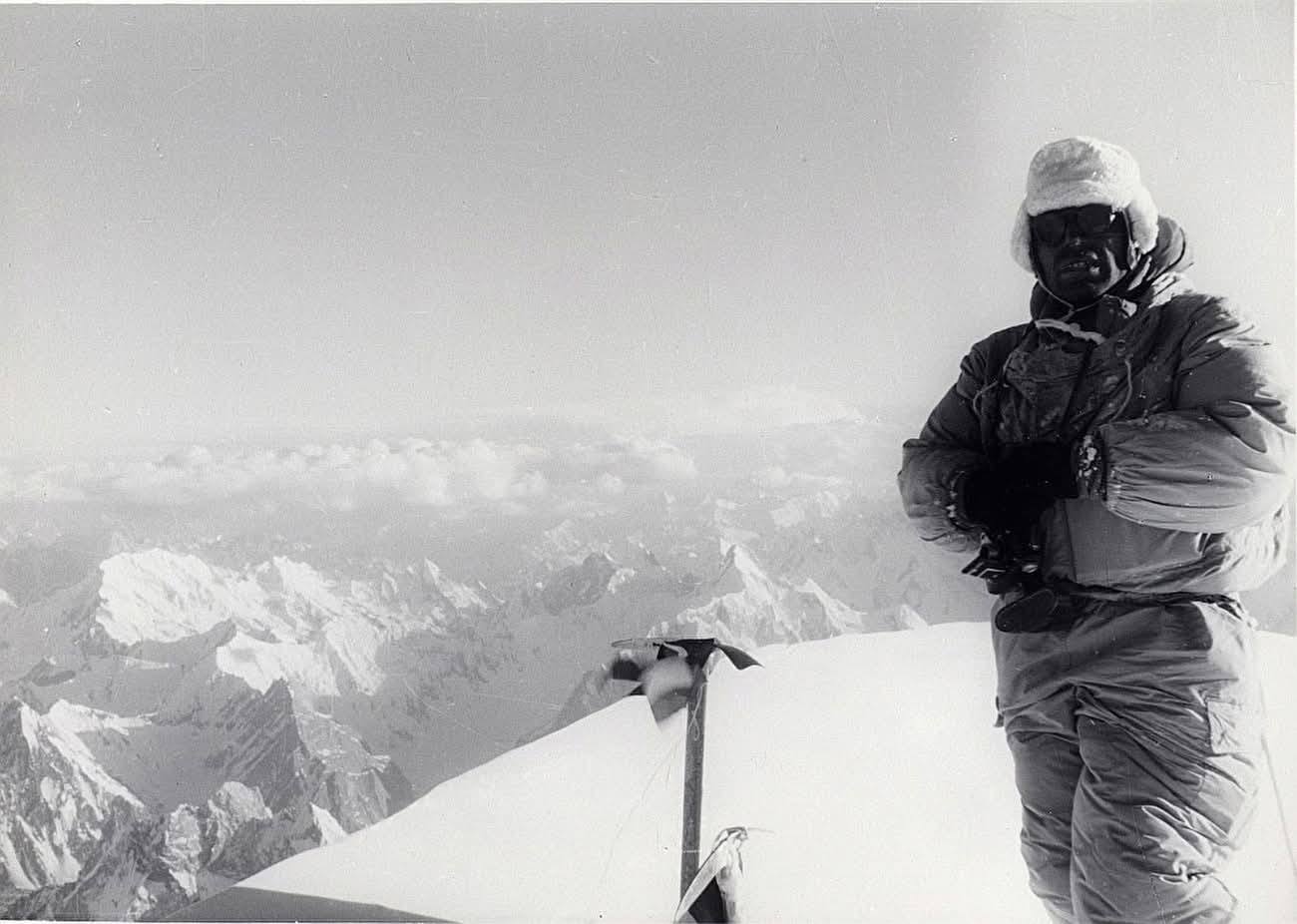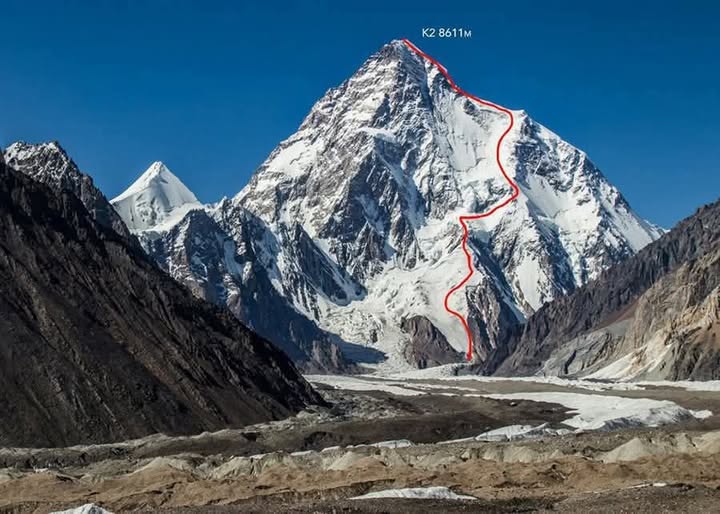In the summer of 1953, beneath the vast, avalanche-scarred walls of Nanga Parbat, one man moved alone toward history. His name was Hermann Buhl.
The mountain was already infamous not for its height, but for its fury. Nanga Parbat: the “Naked Mountain,” the “Killer Mountain.” Thirty-one had died there already. Among them, legends. Willi Merkl, Welzenbach, Wieland. Many porters swept into crevasses. Entire camps were buried under ice. Storms that lasted weeks. The Rakhiot Face had become synonymous with national tragedy, especially in Germany, where its failed climbs were mourned like war losses.
But the story went further back.
In 1895, English climbers Fred Mummery, Geoffrey Hastings, and Norman Collie, along with two Gurkha companions, attempted to climb Nanga Parbat, which was the first summit attempt on any 8,000-meter peak. Mummery disappeared in an avalanche. From then until WWII, German expeditions dominated the mountain’s tragic history: 1932, 1934, 1937, 1938, and 1939 all were unsuccessful. Nepal and Tibet were closed to German climbers, so Nanga Parbat, then in British India, became their focus. A politically accessible monster.
The 1934 expedition led by Willi Merkl, remembered as a national hero, ended in a blizzard beneath the Silbersattel. Merkl was among those who perished. His younger half-brother, Karl Herrligkoffer, then just 17, spent the next two decades dreaming of a memorial climb. By 1951, he was organizing one, though with little Himalayan experience himself, and met with skepticism. Paul Bauer even called him “a man unknown in mountaineering circles.”
In 1953, Herrligkoffer led a joint German–Austrian expedition, backed by the Austrian Alpine Club and Munich’s section of the German Alpine Club. His deputy was Peter Aschenbrenner, a veteran of the 1932 and 1934 expeditions. Also joining were climbers Walter Frauenberger, Otto Kempter, Hermann Köllensperger, Kuno Rainer, Albert Bitterling, and the famed cinematographer Hans Ertl.
The standout was 29-year-old Hermann Buhl from Innsbruck, Austria, already one of the most daring Alpine soloists in Europe. He had climbed the North Face of the Eiger, but never seen the Himalayas.
Initially, five Sherpas were to support the climb, but visa issues led to their replacement by twenty-two Hunzas, recruited in Gilgit, led by liaison officer Rhabar Hassan. At Talichi, 300 hill porters joined for the carry to Base Camp. From Munich, the team traveled through Genoa, Karachi, and Rawalpindi, then flying to Gilgit with nine tons of equipment. In Gilgit, they were honored with ceremonies and given a Pakistani flag to flutter on the summit.
The trek began up the Indus Valley. Past Tato and Fairy Meadows, they established their permanent Base Camp by May 25, a moraine above the Rakhiot Glacier at 4,000 meters. The Hunzas soon struck, demanding lighter loads and more food. Several were fired. Then, a compromise was reached. The ropes and ladders were installed through the icefall. Camp I was located at 4,494 meters, Camp II at 5,300 meters, and Camp III was pitched at 6,100 meters, surrounded by crevasses and seracs.
Storms slowed them. Camp IV was reached only by mid-June. Temperatures were dropped to –21°C. Camp IV sat below Rakhiot Peak, offering a full view of the summit route across the Silbersattel, the Fore Summit, the Bazhin Gap, and then the final ridge. Hunzas refused to carry higher. Some climbers tried to ascend Rakhiot Peak to acclimatize. Buhl, now recovered from illness, stood atop the knife-edged summit, peering over the Rupal Face.
Herrligkoffer, coordinating from Base Camp, remained focused on a group ascent in homage to Merkl’s 1934 plan. But the mountain had its own clock. The monsoon loomed. On July 1, ignoring an order to retreat, four climbers ascended to Camp IV, then on July 2, to a high Camp V near the “Moor’s Head” at nearly 7,000 meters.
That night, Buhl made a decision.
He would go alone.
By 2:00 a.m. on July 3, Buhl was ready. Kempter, his intended partner, stayed in his sleeping bag. Buhl packed: food, stimulants, crampons, flags, ski poles, a camera. No rope. No oxygen. He left into the cold dark, ascending the corniced ridges under a starry sky. On the East Arête, the snow firmed. Progress was steady.
At 7:00 a.m., he reached the Silbersattel. Behind him, in the distance, he spotted Kempter, still far back. Buhl pressed on alone.
Crossing the summit plateau was exhausting. He now needed five breaths per step. Near the Bazhin Gap, he abandoned his rucksack, mistakenly leaving behind a sweater. Traversing close to the north of the Fore Summit, he reached the Bazhin Gap by 2:00 p.m., then ascended to the Shoulder at 8,070 meters. A rock gendarme blocked the ridge, and Buhl descended into a gully, jamming bare hands into rock. He regained the ridge, crawling now.
At 7:00 p.m., July 3, 1953, after 17 hours, Hermann Buhl stood on the summit of Nanga Parbat.
8,125 meters.
Alone.
He photographed the moment, planted his ice axe, and took a stone for his wife.
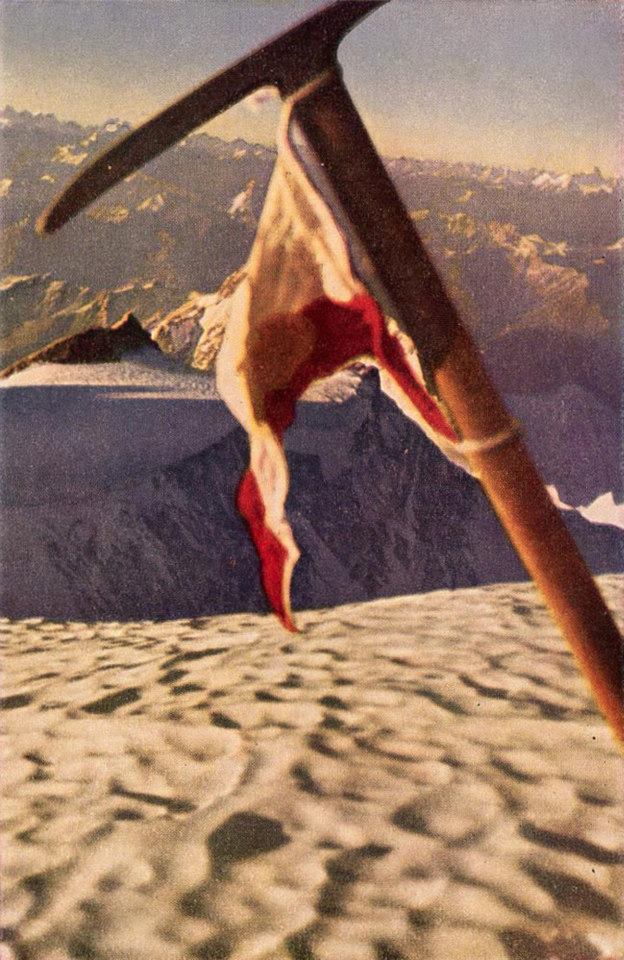
And then night fell.
He descended with ski poles, regretting leaving the axe behind. As darkness closed in, a crampon strap broke. At 9:00 p.m., he stopped with no tent, no rope, no food. He jammed himself against a rock ledge at 7,900 meters, standing, hallucinating, fortified only by stimulants. The stars blazed above the Himalayas.
At dawn on July 4, he began to move again. He descended to retrieve his rucksack near the Fore Summit. There, he chewed glucose tablets with snow. Accompanied by an imaginary companion, he traversed the Silver Plateau, finally spotting the tent.
At 7:00 p.m., 41 hours after setting out, Buhl returned to Camp V.
Ertl came running. They didn’t ask if he had summited. They were just glad he was alive.
The frostbite was severe. His throat burned from the cold. But he had done it, the first ascent of Nanga Parbat, solo, unsupported, unthinkable.
Back at Base Camp, the reception was unexpectedly muted. But Ertl’s photograph of Buhl’s sunburnt, hollowed face, taken during descent, became one of the most iconic in mountaineering history.
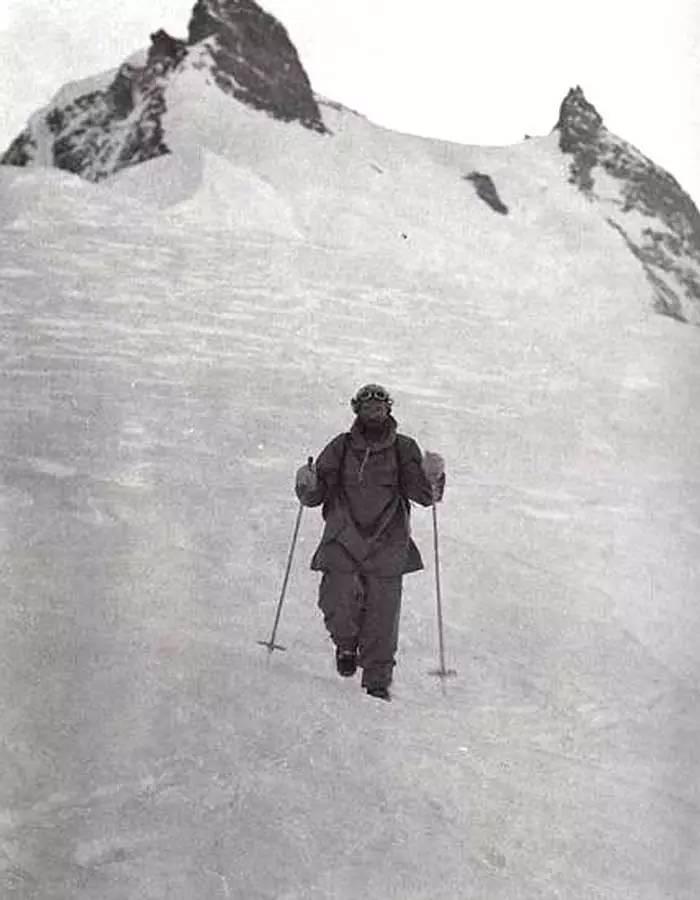
He would lose toes. He would never fully recover. But he had rewritten the limits of the possible.
But he wasn’t done.
Four years later, in the summer of 1957, Buhl returned to Pakistan, this time to the savage spires of the Karakoram.
His partners: Marcus Schmuck, Fritz Wintersteller, and Kurt Diemberger. Their goal: Broad Peak (8,047 meters), untouched. Their vision: pure alpine style. No siege camps. No Sherpas. No oxygen.
It was revolutionary.
They carried their own loads, cooked their own food, climbed as equals. While national expeditions brought armies of porters and barrels of supplies, these four moved like a ghost team through the Baltoro.
Their first attempt reached the forepeak. Close. But not enough.
Then, on June 9, they returned. Two rope teams. Four climbers. And by afternoon, they stood together on the summit of Broad Peak.
All four.
The first time in Himalayan history that every member of an 8000-meter expedition made the summit, unsupported.
For Buhl, it was historic again. He became the first person to complete first ascents on two 8000ers.
However, behind the success, tensions were brewing. The team began to splinter. There were disagreements over leadership, pace, and planning.
Then came one final decision, one last climb.
Without informing the others, Buhl and Diemberger set off toward nearby Chogolisa (7,654 m). The mountain was unclimbed. Its corniced summit ridge beckoned.
On June 27, in poor visibility, they climbed through soft snow toward the top. Diemberger saw Buhl walking ahead when suddenly, the ground beneath him broke.
A cornice broke.
In a heartbeat, Hermann Buhl was gone; he disappeared, and his body was never recovered. Lost forever in the cold mists of the Karakoram.
He was 32.
But his legacy lives on.
Not just for the summits he reached, but for how he reached them.
Nanga Parbat. Broad Peak. Two first ascents on two of the world’s highest mountains. One solo. One with a full team. Neither with oxygen.
His Broad Peak climb helped define a new future: light, fast, ethical. His solo of Nanga Parbat remains one of the most iconic achievements in mountaineering history.
He believed that style mattered as much as success. That’s how you climbed was just as important as where you ended up.
He disappeared into the mist of Chogolisa. But what he left behind wasn’t just history.
It was a standard.
For courage. For conviction. For climbing with soul.


